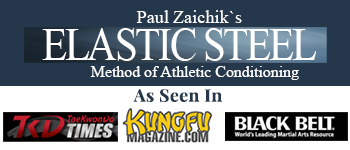Eye Jab for Self Defense Civilian Eye Jab vs Military Eye Jab Legal Ramification in Attacking Eyes in Self Defense
Eye Jab- Civilian Self Defence Vs Military, a legal perspective.

I decided to write this article after seeing many videos going around on the topic of self-defense. Finger jabs are often “go to” technique shown, by “self-defense” experts.
Today, we’ll examine two of the many ways to do eye jabs or eye strikes and the legal consequences of each.

Eye Jab Type one.
Strike Point of Contact: Fingers.
Path: Small Arc
Damage: Usually Not Permanent

Eye Jab Type two.
Strike Point of Contact: Thumb
Path: Straight Line
Damage: Severe if strike is fully committed
Which jab should you use? I recommend using a Civilian, (Type 1, Finger Jab) if in self-defense situations. Properly done the technique will take the fight out of the attacker, and will give you a chance to escape.
In a military combat situation. Civilian eye jab also has an application as well, for the following reason.
-It requires less accuracy.
-It has longer reach.
--It is easier to slip through headgear.
-If it misses, the damage to the fingers is unlikely.
There is always a chance to follow up with other techniques when this technique connects.
There are situations when a “Thumb Jab” is preferred in combat.
- The situation is un-escapable
- The thumb eye jab has been trained for accuracy and conditioned for strength.
- The enemy must be severely hurt or killed, for the soldier to survive or accomplish the mission.
- Multiple enemy combatants are present and the chances of follow up strikes are limited
- The target is clear. (No headgear or other obstruction)
Many military combat instructors prefer the Type one-finger eye jab still. This is due to its reach and accuracy requirement. Most military personnel, spent little time on hand to combat, compare to weapons, and that time must be used most advantageously.
Jab using fingers is also more commonly taught in civilian martial arts. There are a few situations, however, when a thumb strike to the eye is preferred. For example, when on the ground and mounted, the defender does not have much leverage to produce power and finger jab may not hurt enough. In this case, thumb jab is a good substitute.
If you are interested in open hands strikes. Check out the palm strike program on sale now.
Point of Impact Strength and Flexibility Development
This program teaches how to develop flexibility and corresponding strength in the wrist and forearm to properly and safely position the hand for the palm strike.
Here is the full explanation of the program.
Palm vs Fist
The palm is not used as often as the fist in most styles of martial arts. Usually a situation as well as individual preference dictates the choice between the palm and fist, both have their advantages and dis-advantages.
Some advantages of the palm strike are as follows:
- Padded striking surface, thus less chances of injury.
- Less joints to stabilize and thus less force lost upon impact.
- Can be performed at a closer distance.
Of course there are dis-advantages as well, compared to the fist. Some of them are listed below:
- Larger surface area. Thus less penetration and harder to sneak in.
- Less reach.
- Flexibility and strength of the wrist is needed to execute properly.
Of course this is not a complete list.
Full Power
To get full power from the straight palm strike, one needs to keep the forearm in line with the target. This of course calls for at least 90 degree angle in the wrist. (the hand must be vertical as the forearm is horizontal)
More than 90% of people don’t have this flexibility. This means that to keep the palm in the right position, the forearm position is adjusted to partial incline. This lead to biomechanically disadvantageous strikes, causing less force to be delivered than during the correct strike.
Thus flexibility development alone, increases the force delivered by an open hand significantly.
With flexibility must come strength. The strength comes in two parts.
- To prevent injury upon impact.
- To maintain the correct hand position through out the strike.
In this program. We take you through everything required for the proper strike.
- Conditioning
- Flexibility
- Strength
Do you need this program?
Here is how to check: place your forearm on the table palm down. And lift your hand up (extend the wrist joint).
Is your palm vertical?
- If so, you don’t need this program.
- If you palm is not vertical (your finger tips are not directly over your wrist) You need this program.
© ElasticSteel Corp., EasyFlexibility, Paul Zaichik, et. El., 2022. No part of the materials available through ElasticSteel.com, EasyFlexiiblity.com, site may be copied, photocopied, reproduced, translated or reduced to any electronic medium or machine-readable form, in whole or in part, without prior written consent of Paul Zaichik EasyFlexibility.com, Elasticsteel.com.. Any other reproduction in any form without the permission of Paul Zaichik EasyFlexibility.com, Elasticsteel.com is prohibited. All materials contained on this site are protected by United States copyright law and may not be reproduced, distributed, transmitted, displayed, published or broadcast without the prior written permission of Paul Zaichik, EasyFlexibility.com, Elasticsteel.com.


